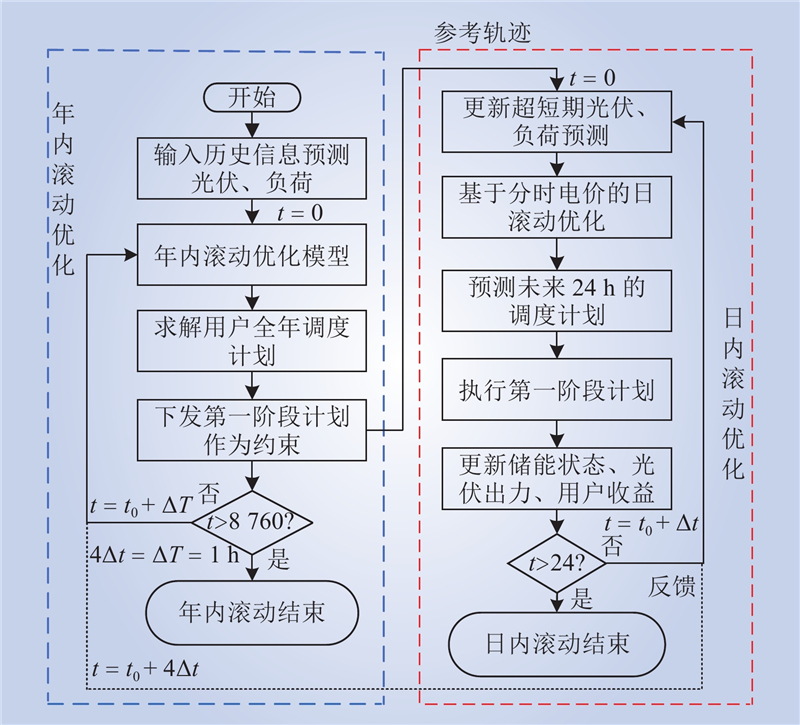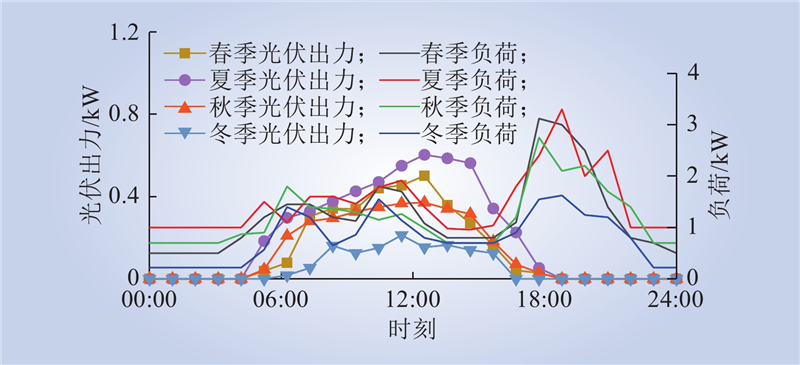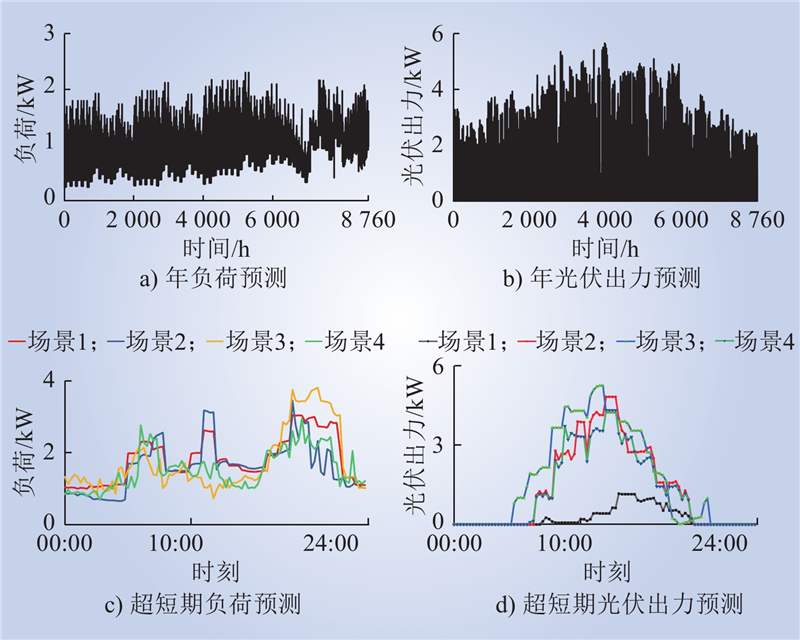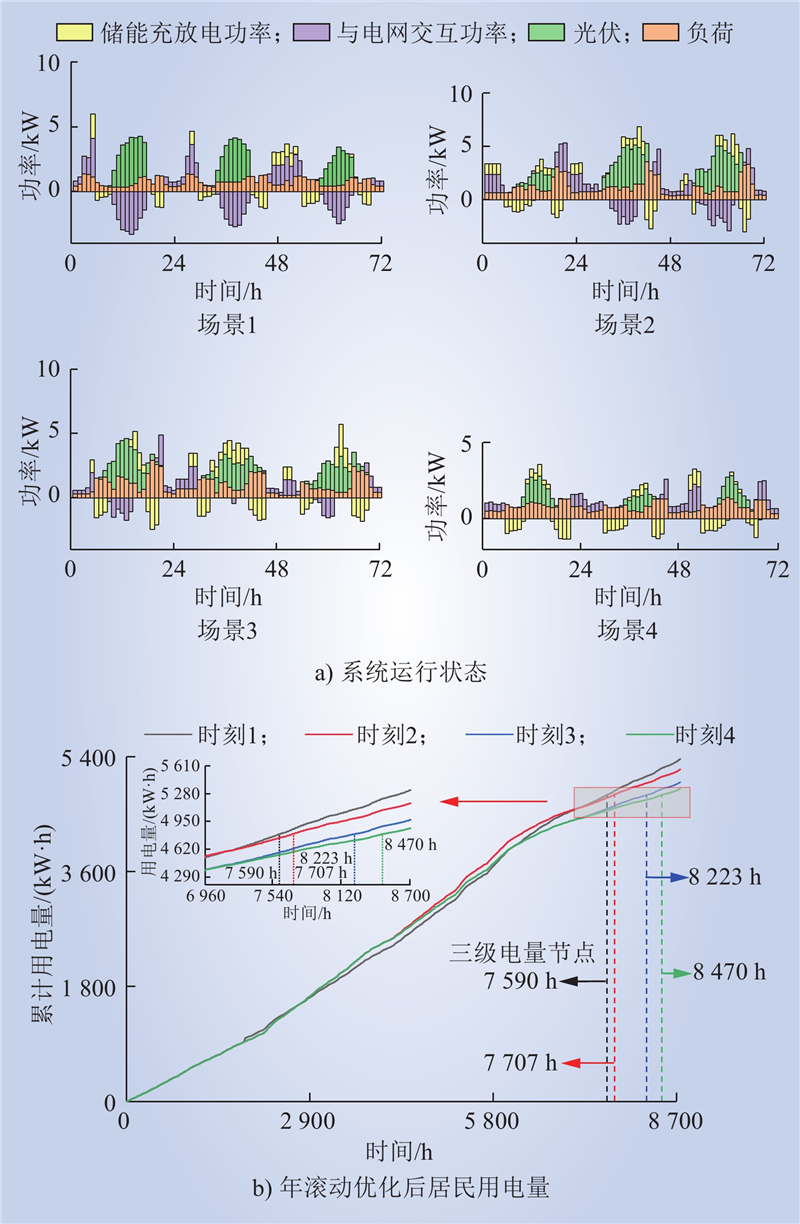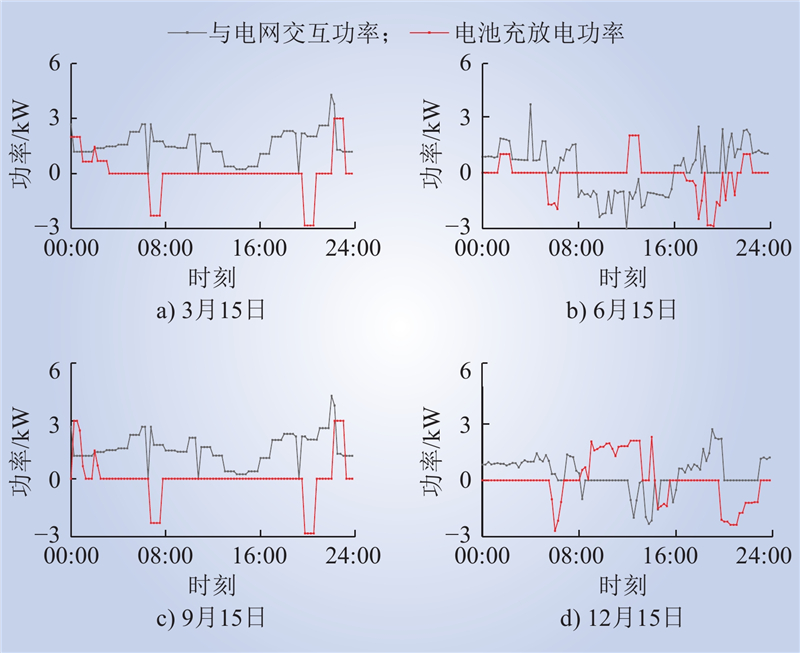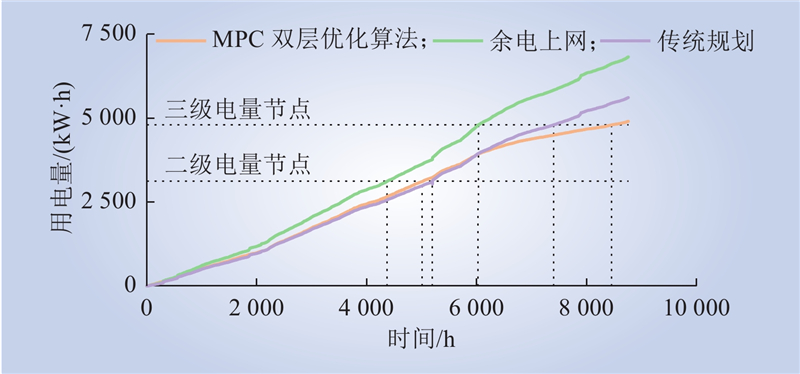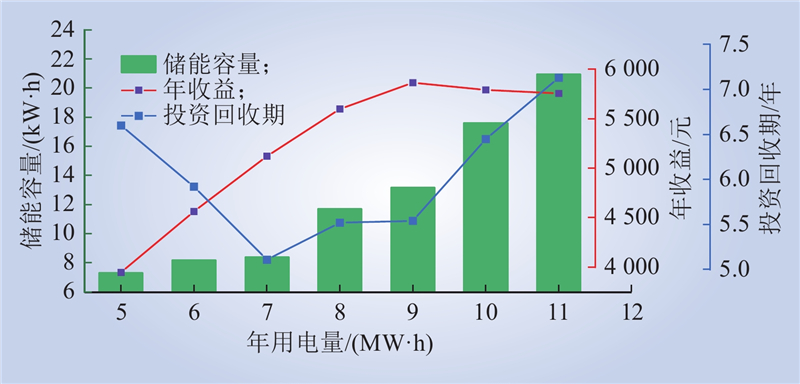| 1 |
李建林, 方知进, 谭宇良, 等. 电化学储能系统在整县制屋顶光伏中应用前景分析[J]. 太阳能学报, 2022, 43 (4): 1- 12.
|
|
LI Jianlin, FANG Zhijin, TAN Yuliang, et al. Application prospect analysis of electrochemical energy storage technology in county-wide rooftop photovoltaic system[J]. Acta Energiae Solaris Sinica, 2022, 43 (4): 1- 12.
|
| 2 |
谢小荣, 马宁嘉, 刘威, 等. 新型电力系统中储能应用功能的综述与展望[J]. 中国电机工程学报, 2023, 43 (1): 158- 168.
|
|
XIE Xiaorong, MA Ningjia, LIU Wei, et al. Functions of energy storage in renewable energy dominated power systems: review and prospect[J]. Proceedings of the CSEE, 2023, 43 (1): 158- 168.
|
| 3 |
韩宇, 周前, 李勇, 等. 户用光伏接入的低压配电网电能质量问题分析与附加损耗量化评估[J]. 电力科学与技术学报, 2024, 39 (3): 177- 186.
|
|
HAN Yu, ZHOU Qian, LI Yong, et al. Analysis of power quality issues and quantitative evaluation of additional losses in low voltage distribution networks connected to household photovoltaics[J]. Journal of Electric Power Science and Technology, 2024, 39 (3): 177- 186.
|
| 4 |
黄雨涵, 丁涛, 李雨婷, 等. 碳中和背景下能源低碳化技术综述及对新型电力系统发展的启示[J]. 中国电机工程学报, 2021, 41 (S1): 28- 51.
|
|
HUANG Yuhan, DING Tao, LI Yuting, et al. Decarbonization technologies and inspirations for the development of novel power systems in the context of carbon neutrality[J]. Proceedings of the CSEE, 2021, 41 (S1): 28- 51.
|
| 5 |
姜欣, 刘萌, 王天梁, 等. 电网侧储能电站参与现货联合市场的竞价策略[J]. 电网技术, 2021, 45 (9): 3398- 3408.
|
|
JIANG Xin, LIU Meng, WANG Tianliang, et al. Bidding strategy for grid-side energy storage power stations to participate in the spot joint market[J]. Power System Technology, 2021, 45 (9): 3398- 3408.
|
| 6 |
KHEZRI R, MAHMOUDI A, HAQUE M H. Optimal capacity of solar PV and battery storage for Australian grid-connected households[J]. IEEE Transactions on Industry Applications, 2020, 56 (5): 5319- 5329.
DOI
|
| 7 |
高军伟, 陈泽雄, 郑欣, 等. 含光伏的冷热电联供园区微网多类型储能协调鲁棒优化配置[J]. 电力科学与技术学报, 2021, 36 (6): 56- 66.
|
|
GAO Junwei, CHEN Zexiong, ZHENG Xin, et al. Coordinated robust optimal allocation of multiple types energy storage devices in the CCHP campus microgrid with photovoltaic[J]. Journal of Electric Power Science and Technology, 2021, 36 (6): 56- 66.
|
| 8 |
MULLERIYAWAGE U G K, SHEN W X. Optimally sizing of battery energy storage capacity by operational optimization of residential PV-battery systems: an Australian household case study[J]. Renewable Energy, 2020, 160, 852- 864.
DOI
|
| 9 |
ALLOUHI A, SAADANI R, BUKER M S, et al. Energetic, economic and environmental (3E) analyses and LCOE estimation of three technologies of PV grid-connected systems under different climates[J]. Solar Energy, 2019, 178, 25- 36.
DOI
|
| 10 |
ZHAO X G, XIE Y M. The economic performance of industrial and commercial rooftop photovoltaic in China[J]. Energy, 2019, 187, 115961.
DOI
|
| 11 |
韩峰, 曾成碧, 苗虹. 计及EV与可再生能源的家庭微电网能源管理系统[J]. 电力科学与技术学报, 2021, 36 (1): 79- 86.
|
|
HAN Feng, ZENG Chengbi, MIAO Hong. Study on the energy management system of an electric vehicle and renewable energy in home micro-grid[J]. Journal of Electric Power Science and Technology, 2021, 36 (1): 79- 86.
|
| 12 |
刘海涛, 马丙泰, 郝思鹏, 等. 考虑功率限值管理的光储系统建模及控制策略[J]. 电力系统及其自动化学报, 2022, 34 (11): 100- 108.
|
|
LIU Haitao, MA Bingtai, HAO Sipeng, et al. Modeling and control strategy for photovoltaic energy storage system considering power limit management[J]. Proceedings of the CSU-EPSA, 2022, 34 (11): 100- 108.
|
| 13 |
ABBASI A, SULTAN K, AFSAR S, et al. Optimal demand response using battery storage systems and electric vehicles in community home energy management system-based microgrids[J]. Energies, 2023, 16 (13): 5024.
DOI
|
| 14 |
张甜, 赵奇, 陈中等. 基于深度强化学习的家庭能量管理分层优化策略[J]. 电力系统自动化, 2021, 45 (21): 149- 158.
DOI
|
|
ZHANG Tian, ZHAO Qi, CHEN Zhong, et al. Hierarchical optimization strategy for home energy management based on deep reinforcement learning[J]. Automation of Electric Power Systems, 2021, 45 (21): 149- 158.
DOI
|
| 15 |
翟桥柱, 周玉洲, 李轩, 等. 非预期性与全场景可行性: 应对负荷与可再生能源不确定性的现状、挑战与未来[J]. 中国电机工程学报, 2020, 40 (20): 6418- 6432.
|
|
ZHAI Qiaozhu, ZHOU Yuzhou, LI Xuan, et al. Nonanticipativity and all-scenario-feasibility: state of the art, challenges, and future in dealing with the uncertain load and renewable energy[J]. Proceedings of the CSEE, 2020, 40 (20): 6418- 6432.
|
| 16 |
孙可, 杨翾, 徐祥海, 等. 虚拟聚合下多微电网功率交互提升配电系统灵活性研究[J]. 可再生能源, 2023, 41 (10): 1360- 1367.
DOI
|
|
SUN Ke, YANG Xuan, XU Xianghai, et al. Flexibility enhancement for distribution network based on power interaction of multi-microgrid under virtual aggregation[J]. Renewable Energy Resources, 2023, 41 (10): 1360- 1367.
DOI
|
| 17 |
张开鹏, 杨雪梅, 张宏甜, 等. 考虑 “光伏-储能” 耦合参与调峰的配电网氢储能优化配置[J]. 电网与清洁能源, 2023, 39 (10): 95- 103, 112.
DOI
|
|
ZHANG Kaipeng, YANG Xuemei, ZHANG Hongtian, et al. A study on the optimal configuration of hydrogen energy storage in the distribution network considering "photovoltaic-energy storage" coupling participating and peak shaving[J]. Power System and Clean Energy, 2023, 39 (10): 95- 103, 112.
DOI
|
| 18 |
田杨阳, 张小斐, 耿俊成等. 基于改进聚类和LSTM的居民小区中长期负荷预测[J]. 河南电力, 2020, (S2): 58- 63.
|
|
TIAN Yangyang, ZHANG Xiaofei, GENG Juncheng, et al. Medium and long-term load forecasting for residential neighbourhoods based on improved clustering and LSTM[J]. Henan Electric Power, 2020, (S2): 58- 63.
|
| 19 |
姜晓锋, 魏巍, 王永灿, 等. 含电动汽车智慧楼宇的多时间尺度MPC能量管理策略[J]. 重庆理工大学学报(自然科学), 2023, 37 (2): 260- 271.
|
|
JIANG Xiaofeng, WEI Wei, WANG Yongcan, et al. Multi-time scale MPC energy management strategy for smart buildings with electric vehicles[J]. Journal of Chongqing University of Technology (Natural Science), 2023, 37 (2): 260- 271.
|
| 20 |
陈亭轩, 徐潇源, 严正, 等. 基于深度强化学习的光储充电站储能系统优化运行[J]. 电力自动化设备, 2021, 41 (10): 90- 98.
|
|
CHEN Tingxuan, XU Xiaoyuan, YAN Zheng, et al. Optimal operation based on deep reinforcement learning for energy storage system in photovoltaic-storage charging station[J]. Electric Power Automation Equipment, 2021, 41 (10): 90- 98.
|
| 21 |
曹雅琦, 赵波, 王丽婕, 等. 基于遗传蚁群的光储电站运行效益提升策略研究[J]. 中国电力, 2022, 55 (2): 9- 18.
|
|
CAO Yaqi, ZHAO Bo, WANG Lijie, et al. Research on operational benefit improvement strategy of optical storage power station based on genetic ant colony algorithm[J]. Electric Power, 2022, 55 (2): 9- 18.
|
| 22 |
马汇海, 宋金鹏, 康家玉. 基于分时电价的用户侧光伏储能系统容量配置[J]. 科学技术与工程, 2023, 23 (31): 13387- 13393.
|
|
MA Huihai, SONG Jinpeng, KANG Jiayu. Capacity configuration of user-side photovoltaic energy storage system based on time-of-use electric price[J]. Science Technology and Engineering, 2023, 23 (31): 13387- 13393.
|
| 23 |
陈崇德, 郭强, 宋子秋, 等. 计及碳收益的风电场混合储能容量优化配置[J]. 中国电力, 2022, 55 (12): 22- 33.
|
|
CHEN Chongde, GUO Qiang, SONG Ziqiu, et al. Optimal configuration of hybrid energy storage capacity for wind farms considering carbon trading revenue[J]. Electric Power, 2022, 55 (12): 22- 33.
|
| 24 |
刘阳, 滕卫军, 谷青发, 等. 规模化多元电化学储能度电成本及其经济性分析[J]. 储能科学与技术, 2023, 12 (1): 312- 318.
|
|
LIU Yang, TENG Weijun, GU Qingfa, et al. Scaled-up diversified electrochemical energy storage LCOE and its economic analysis[J]. Energy Storage Science and Technology, 2023, 12 (1): 312- 318.
|
| 25 |
梁喆, 李梅, 周孟然, 等. 面向光伏消纳的光伏-废弃矿井抽蓄-蓄电池联合发电系统优化调度策略[J]. 科技导报, 2021, 39 (13): 52- 58.
|
|
LIANG Zhe, LI Mei, ZHOU Mengran, et al. Optimal scheduling strategy for PV-abandoned mine pumped storage-battery hybrid power generation system for PV energy consumption[J]. Science & Technology Review, 2021, 39 (13): 52- 58.
|
| 26 |
蔡钦钦, 杨晓华, 朱永强. 楼宇能量管理系统的光伏消纳与储能调度研究[J]. 电力建设, 2020, 41 (1): 23- 31.
|
|
CAI Qinqin, YANG Xiaohua, ZHU Yongqiang. Research on photovoltaic accommodation and energy storage scheduling of building energy management system[J]. Electric Power Construction, 2020, 41 (1): 23- 31.
|




